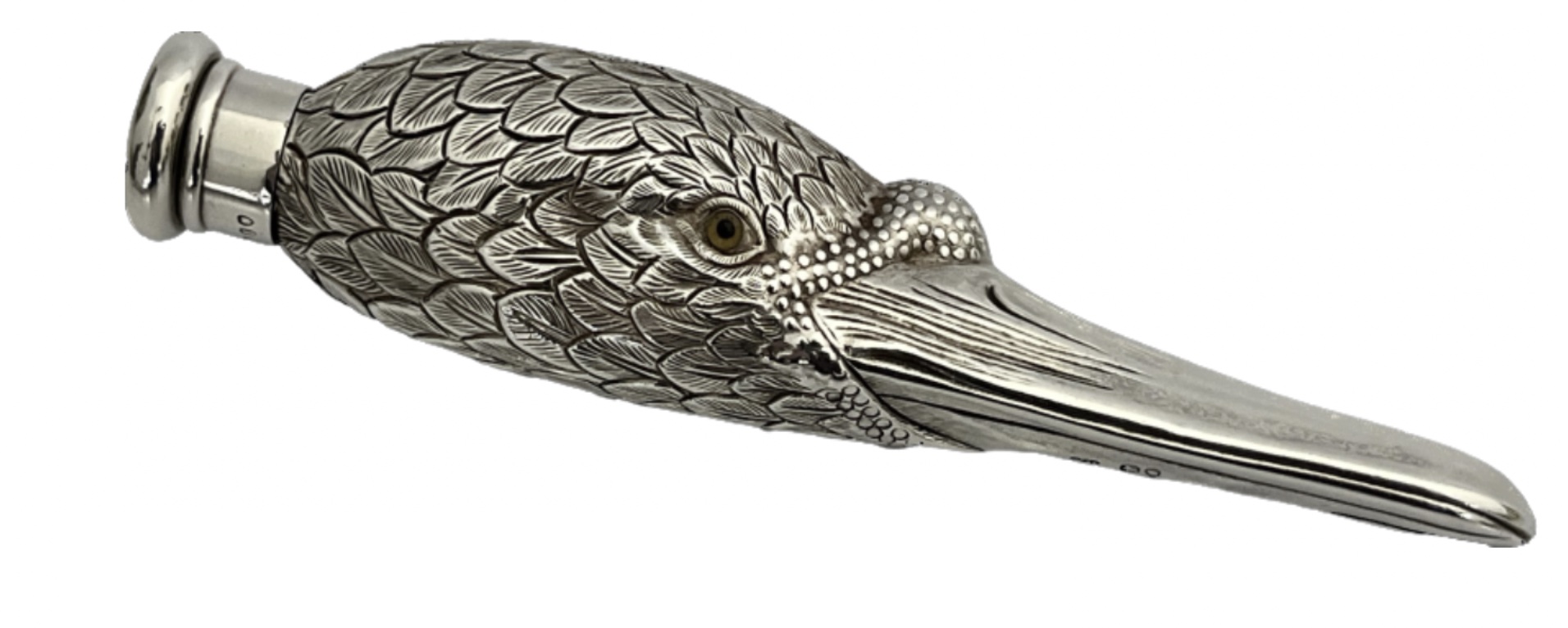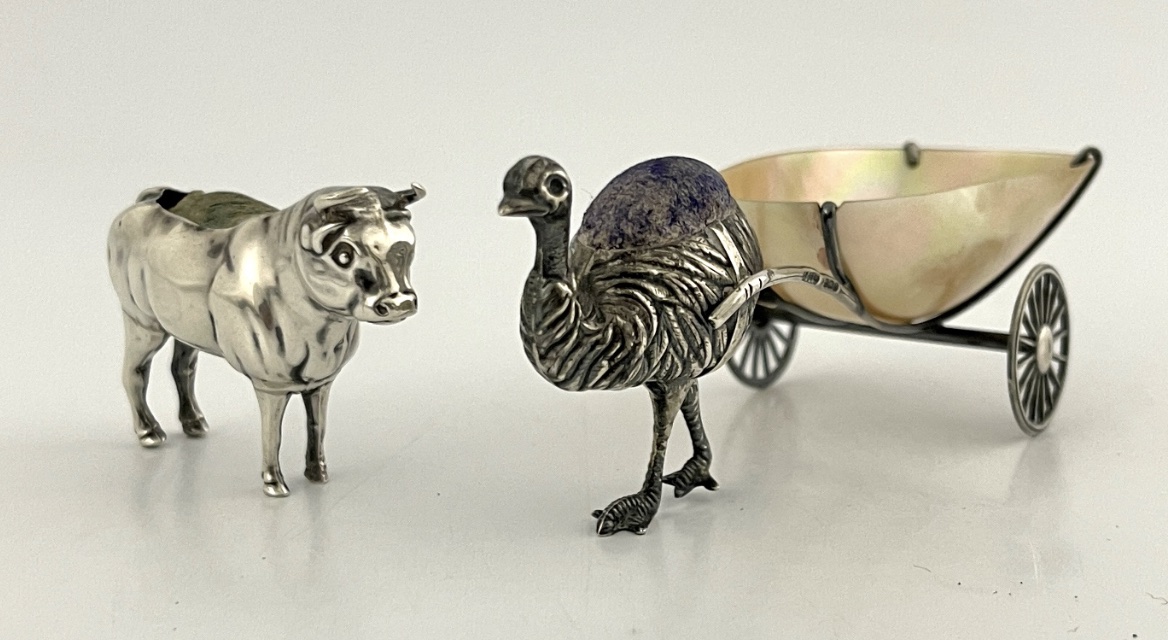Novelty English silver set to shine

A collection of novelty English silver is to be offered at Gloucestershire’s Kinghams Auctioneers’ inaugural Silver & Objects of Vertu sale.
The auction house said that novelty pieces of silver are very popular amongst collectors and connoisseurs, with ‘Novelty’ referring to functional objects, often crafted out of precious metal, and fashioned in a unique way to elevate a utilitarian piece into a statement item for the discerning lady or gent.

The Victorians were fascinated by the natural world and as a result, such novelty useable objects were crafted in unusual forms, often as animals or ‘zoomorphic’ objects.
Highlights from the auctioneer’s sale are a collection of zoomorphic pieces, including an exceptionally rare Victorian silver novelty scent or perfume bottle, modelled in the form of a swan’s head, inset with glass eyes, the body with textured decoration to simulate feathers. The item is fully hallmarked for London, 1884 and is made by the famous firm of Sampson Mordan – well regarded for crafting fine quality luxurious goods.

A further highlight is a much sought-after novelty silver mustard pot, modelled in the form of a standing owl, the body with textured feathers and red glass eyes, made George Richards and Edward Brown, London 1865. This owl has caught a mouse, which tops the small mustard ladle. Mustard pots are collected in their own right; however such is the popularity of this form of zoomorphic example, modern recreations are still being produced.
Silver pin cushions remain ever popular, and the rare novelty zoomorphic forms are amongst those highly prized by collectors. Coming up for sale at Kinghams, is an Edwardian silver pin cushion, modelled in the form of a standing bull, made by Cohen and Charles of Birmingham in 1906. The bull is a form not often encountered.

Another unusual example is the pin cushion modelled in the form of an emu with mother-of-pearl cart. The cart with fully functional wire-spoked wheels, being designed to take the thimble. This piece was made by Adie & Lovekin, in Birmingham and dates to 1912. Not only is this a rare form of pin cushion, but it is also an early example of an Australian animal depicted in English-made silver.
These selected highlights, as well as other pieces of fine quality silver will be offered for sale on September 8.

